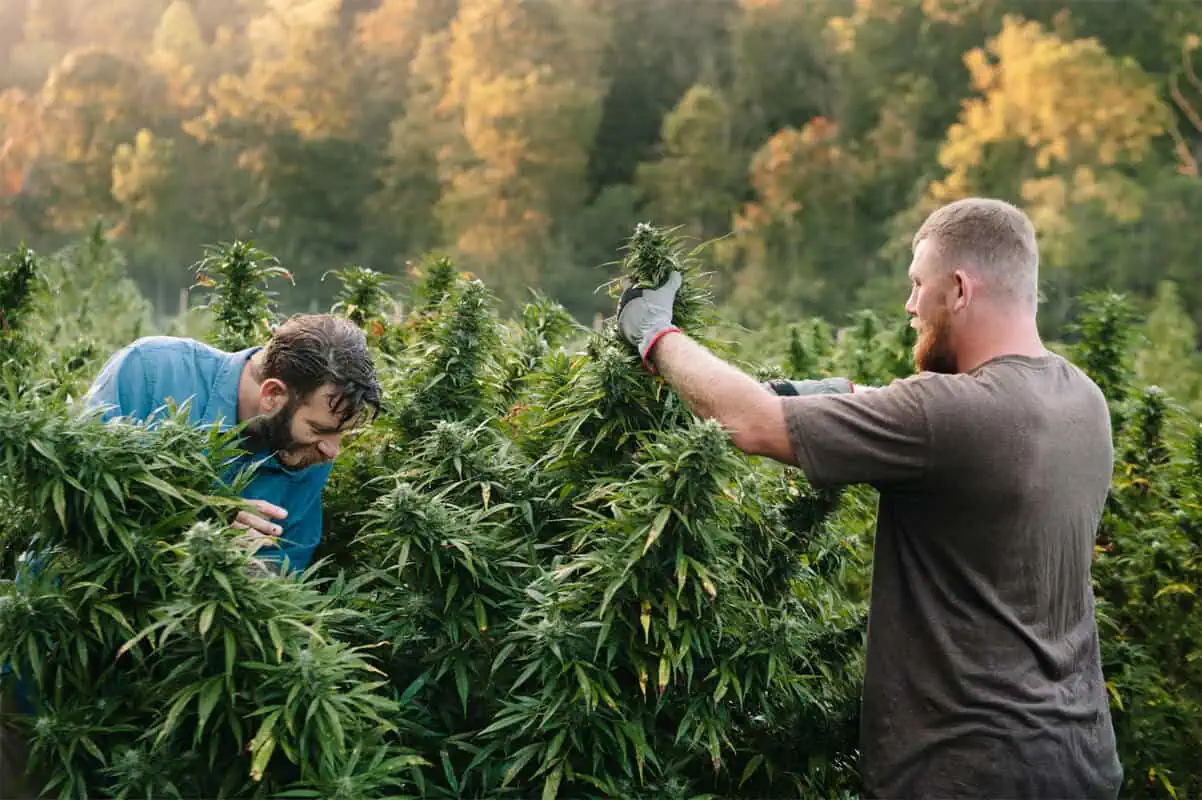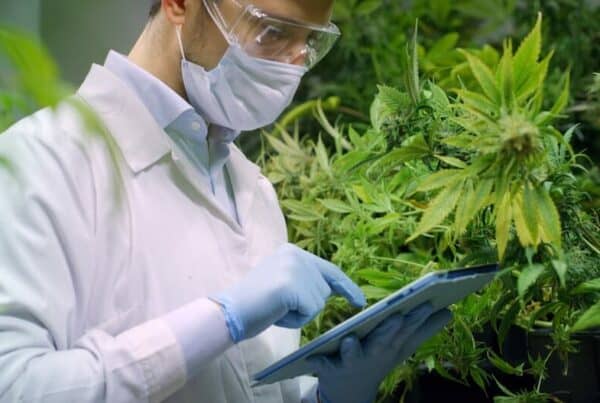TABLE OF CONTENTS
What does marijuana look like? If you are a first-time marijuana user, it can be challenging to keep track of the different marijuana products available and the plant's anatomy. Understanding how the marijuana plant and its products look can help users source the best cannabis and consume marijuana safely.
What Is Marijuana?
Cannabis, also known as weed, mary jane, ganja, and marijuana, is an annual flowering plant. Since it is dioecious, it produces either male or female plants. During the plant’s flowering stage, its flower buds bloom and are harvested for consumption. While most growers focus on the flowers that people smoke, the seeds and the fiber of a plant can also be used commercially.
Cannabis seeds contain a high protein and oil concentration and are used for skincare and food products or to develop new strains. Marijuana fiber in these stalks of the plant can be used for dozens of industrial applications, including plastic, paper, cloth, and rope.
Its flower buds are prized for their resinous oils used for medical or recreational purposes. Consumption of these oils can produce intoxicating effects and beneficial health effects. The oils can be extracted or infused into various products.
What Does Marijuana Look Like?
A few plants look like cannabis plants, but the marijuana plant has some unique features. Generally, cannabis plants have a bright or dark green color. However, some plants can produce various colors, including purple, pink, blue, and more, depending on their genetics and growing environment.
The marijuana plant grows a tall primary stem and horizontal branches extending from the stem, growing fan leaves and flowers. Marijuana smoke from the flowers can range in aroma depending on the strain genetics but typically has a skunky smell.
Marijuana Fan Leaves
Marijuana fan leaves refer to the large leaves found on the plant's branches. They have slender and long “fingers” to capture light for photosynthesis. The fan leaves have stomata pores that allow them to breathe in CO2 (at night) and release oxygen in the day. Fan leaves can have between five or seven fingers, with serrated edges, but can go up to 13 fingers.
Fan leaves are made up of the petiole, apex, ventral surface, and dorsal surface. The petiole is the stalk that joins the fan leaf to the stem and allows energy exchange. The ventral surface is the upper side of the fan leaf used to absorb light. The dorsal surface is the underside capable of storing small amounts of water. The apex refers to the tip of the leaf.
Fan leaves do not have a high concentration of cannabinoids or terpenes. However, they can be used for various purposes such as juicing, adding to your salads, using as rolling papers, or for making tea. Find out more ways to use your marijuana fan leaves with our blog post.
Marijuana Flowers
Cannabis flowers are the most prized part of the marijuana plant. These dense and resinous flower buds contain the plant's trichome glands, which produce the chemical compounds known as cannabinoids and terpenes, known for their psychoactive and therapeutic effects.
Female marijuana plants only produce cannabis flowers. Unlike traditional flowers with colorful petals, these cannabis plant flowers are dense and look like tiny buds. These buds have leaves called bracts, where the plant’s trichomes are found.
Marijuana Trichomes
How does marijuana affect a person? The effects of marijuana use are due to the consumption of its trichomes. Marijuana trichomes are small resin-coated growths on the surface of the plant. You will need a microscope to get a better look. While they are found across the entire cannabis plant, most of the trichomes are found on the bracts of the flowers.
Trichomes contain the plant's cannabinoids, terpenes, and flavonoids. Cannabinoids include delta-9 tetrahydrocannabinol (THC) and cannabidiol (CBD) cannabinoids. Flowers begin developing during the flowering stage of the plant and mature from a translucent gland to a bulbous and amber-colored gland.
Marijuana Sugar Leaves
Cannabis flowers contain sugar leaves known for their higher resin content than fan leaves. Sugar leaves are the leaves that extend from the flower and look like they are covered in sugar.
Cannabis Stigmas and Pistils
Marijuana stigmas and pistils are the hair-like growths that grow on the bracts of the flowers. Stigmas are meant to capture the male plant’s pollen, which produces seeds. Stigmas can change color during the flowering stage and transform from a white and yellow color to orange, red, and brown color. Growers can use stigmas to determine if the buds are ready for harvest.
Female vs. Male Marijuana Plants
Since cannabis plants are dioecious, they can produce male or female plants. In the medical and recreational market, most growers focus on the female marijuana plant since they only grow flowers. Some breeders grow male plants to produce new hybrids.
As a marijuana grower, knowing the difference between male and female plants can help prevent lower yields and hermaphroditic characteristics. Growers can look at the plant's nodes to determine if the plant has either pollen sacs or flowers. The nodes are where the primary stem and branches intersect.
Marijuana growers can begin to tell the difference between male and female marijuana plants about 4 to 6 weeks into the vegetative stage when the pre-flowers start to grow. Learn more about identifying male and female marijuana plants in our blog post.
Sativa vs. Indica Marijuana Plants
Indica and sativa plants are two primary species of marijuana. Both indica and sativa plants share the same anatomy and features but have different structures and growth patterns. For instance, indica plants tend to grow shorter and bushier than cannabis sativa plants, which grow taller and slender.
Indica plants usually have broader leaves and denser and smaller flowers than the narrow leaves and the wispy flowers from sativa plants.
Marijuana Products
While whole-flower products are the most popular on the market, the resin from the buds can be used to produce a wide range of products, including joints, concentrates, topicals, and edibles. There are many forms of marijuana that can be consumed safely for personal use.
Flower
Cannabis flowers are smokeable. After being harvested, trimmers remove the excess sugar leaves and stems. After being trimmed, the buds undergo a drying and curing process that removes additional moisture and refines the flavor, leaving behind an aesthetically pleasing bud that tastes and smells great.
Joints
Joints and pre-rolls are essentially marijuana cigarettes. Joints are ground marijuana flowers that are rolled in a rolling paper. Joints can be purchased pre-assembled from a dispensary or be made at home. They can contain concentrate inside or outside to enhance the potency.
Vapes
Marijuana vapes are devices that are used to vaporize cannabis flowers or concentrates. Each vape has unique features, temperature control, styles, and can range from desktop vaporizers to portable and disposable pens.
Tinctures
Marijuana tinctures and oils are liquid forms of marijuana that contain concentrates. Tinctures are usually made with an alcohol base. They come in small dropper bottles that feature a dropper for easy dosing.
Concentrates
Marijuana concentrates are concentrated forms of marijuana with very high THC concentrations and are used for long-lasting, strong, and fast-acting relief. Processors can make a wide range of concentrate types depending on their solvent used, the whipping process, and the strain’s chemical profile.
“
There are over 300,000 jobs in the cannabis industry. CTU trained me for one of them!

Makes $24.50 @ THC +
Some of the most popular marijuana concentrates include shatter, wax, crumble, live resin, and distillate. Each has a distinct appearance. For example, marijuana shatter has a brittle consistency while budder has a creamier consistency.
Edibles
Marijuana edibles are any food or drink infused with marijuana. There are many edibles, including sweet and savory options such as gummies, chocolate bars, cookies, capsules, and more. Because these Edibles look exactly like traditional food products, you need more precautions to keep away from children and pets.
Topicals
Marijuana topicals come in a wide range of products, including salves, lotions, creams, and more. Topicals can be applied to the skin, where the cannabinoids can be absorbed and provide localized relief without intoxication.
Learn More About the Cannabis Plant at CTU
Cannabis Training University provides students worldwide with online industry training covering all the major aspects, from cultivation to medicine to extraction and cooking and more. Learn how to grow cannabis, find a fulfilling career, or start your own business with world-renowned instruction from CTU.

Fred Hernandez
Fred Hernandez is a highly accomplished and versatile writer, boasting an extensive background in the cannabis industry. With an in-depth understanding of various sectors including cultivators, processors, retailers, and brands, Fred's expertise spans across the entire cannabis landscape. As a prominent contributor to CTU, he consistently delivers insightful articles exploring the latest developments, news, and regulations shaping the cannabis industry. Whether it's delving into the intricacies of cannabis products, cannabis strain reviews, or providing comprehensive analyses of cannabis laws, or sharing expert insights on cannabis cultivation techniques, Fred's wealth of knowledge positions him as an invaluable writer and educator for all cannabis-related subjects.












 Jeff was involved in an accident where he endured a traumatic brain injury. He had a week-long stay in ICU where brain surgeons
Jeff was involved in an accident where he endured a traumatic brain injury. He had a week-long stay in ICU where brain surgeons  100% risk free money back guarantee within 48 hours after purchase if student has not completed any of the courses or exams.
100% risk free money back guarantee within 48 hours after purchase if student has not completed any of the courses or exams.